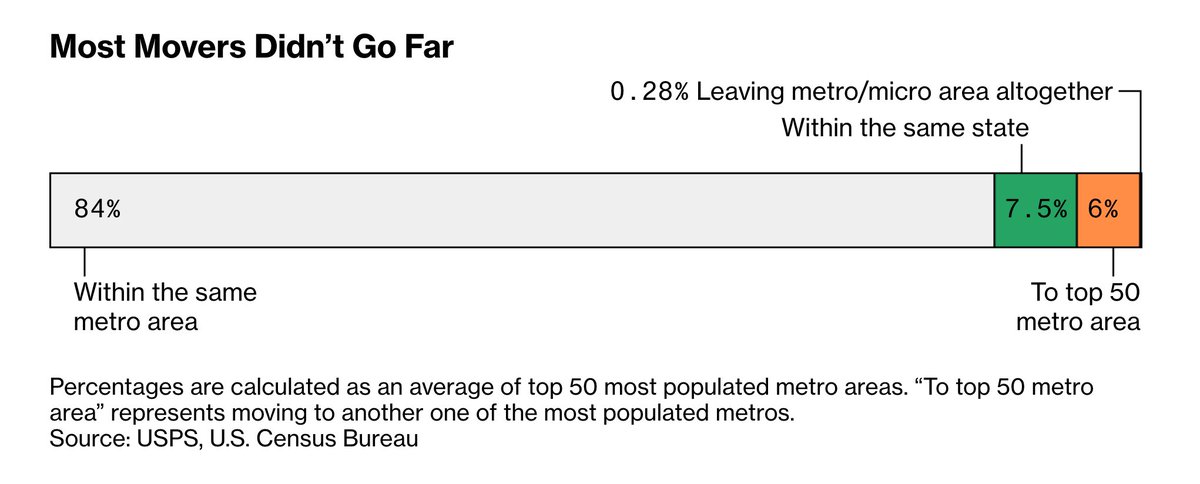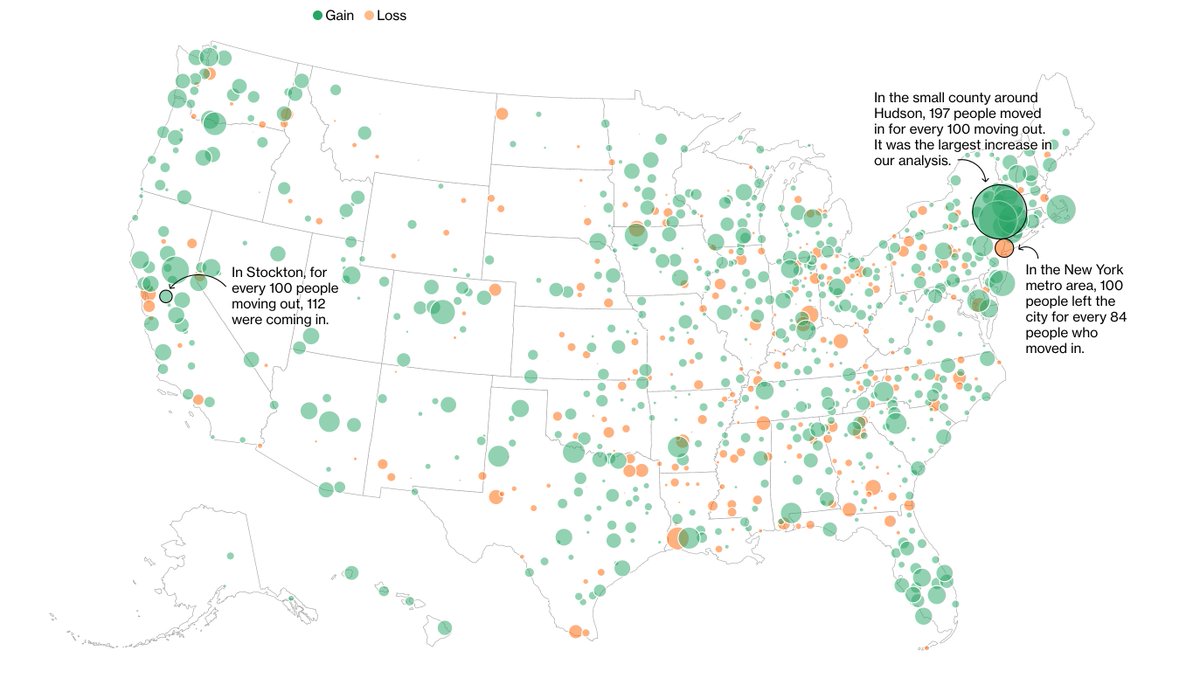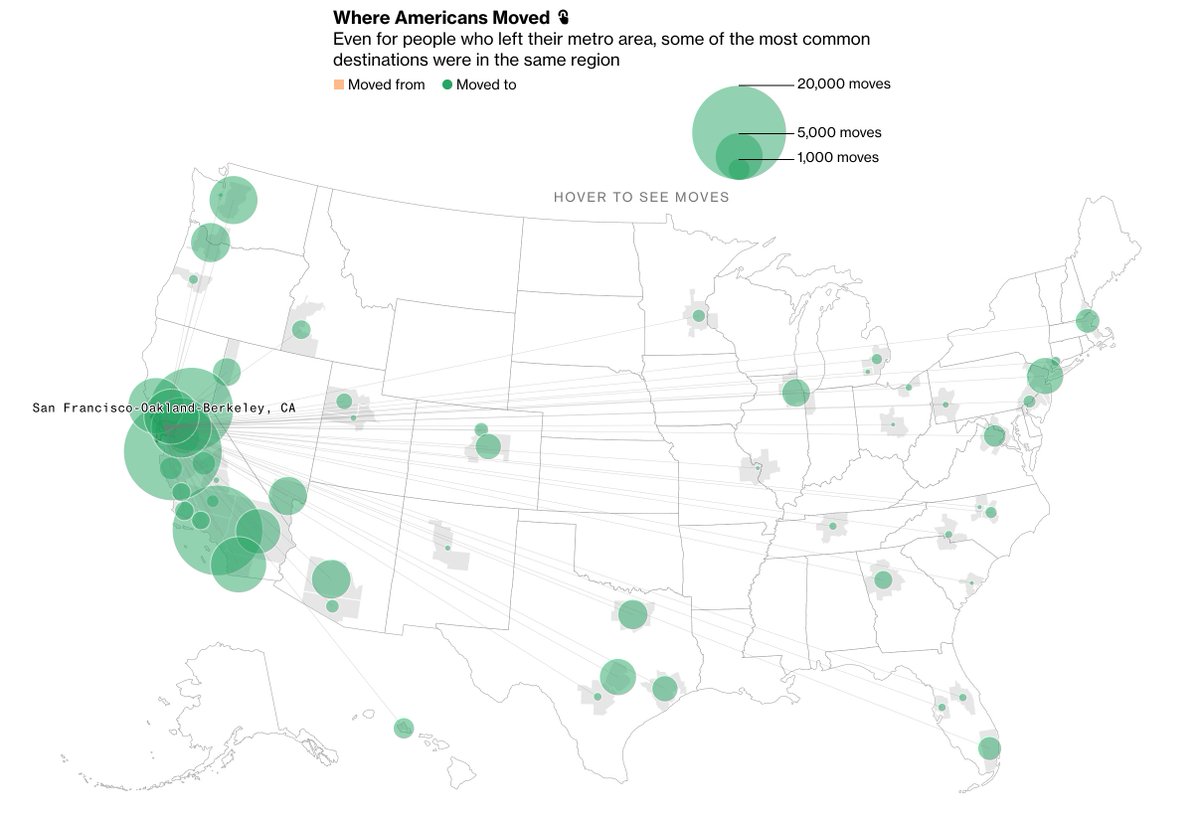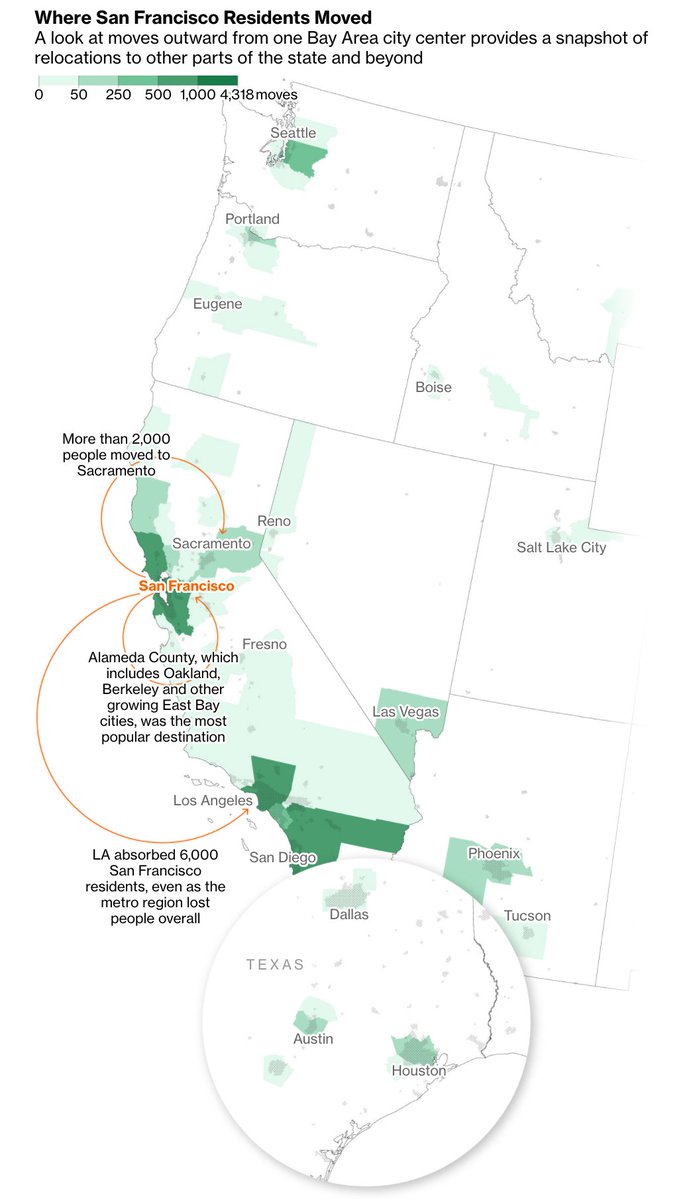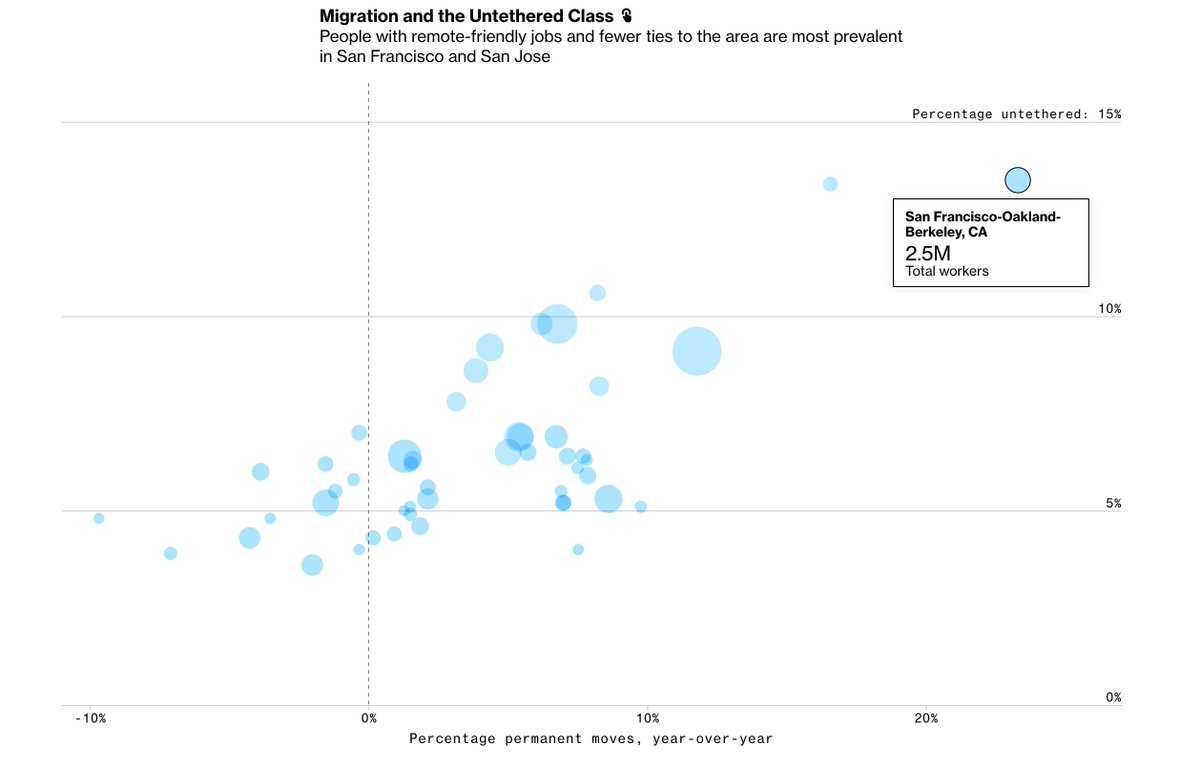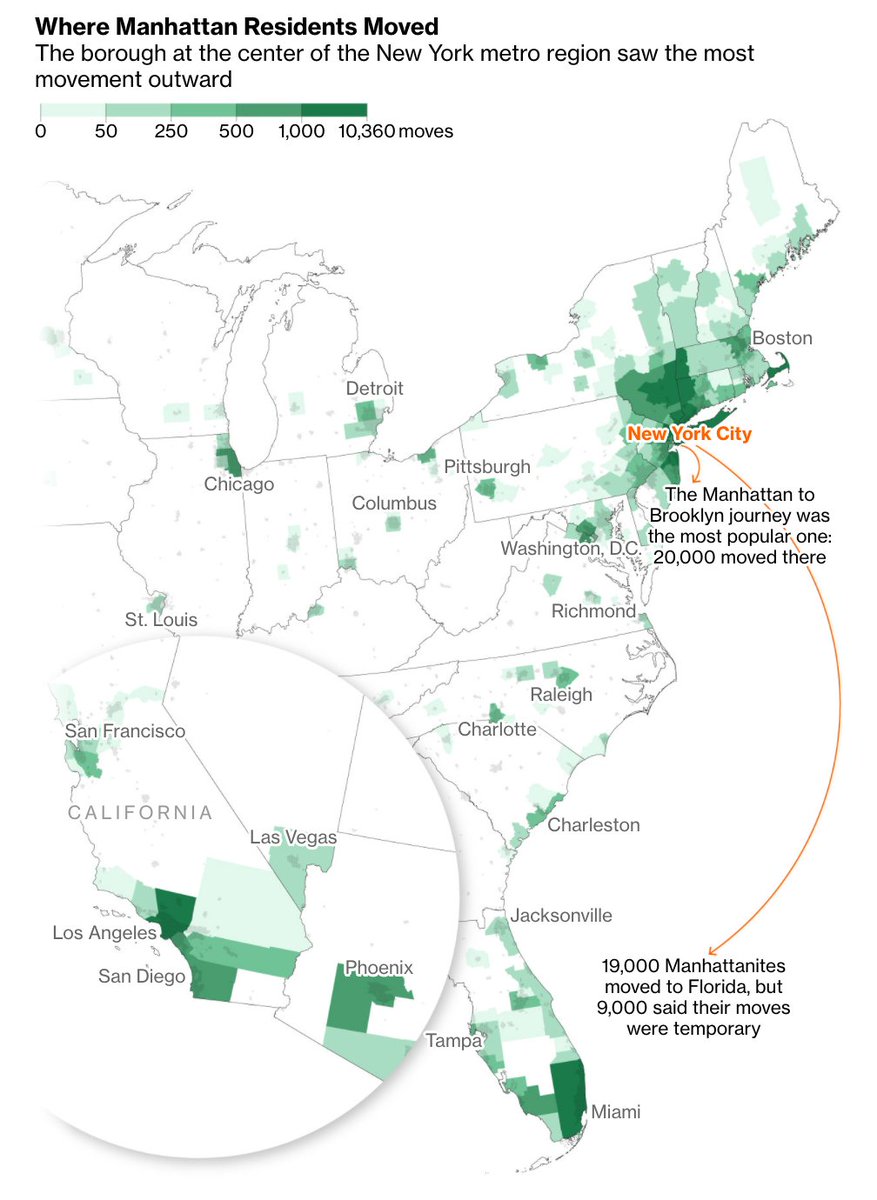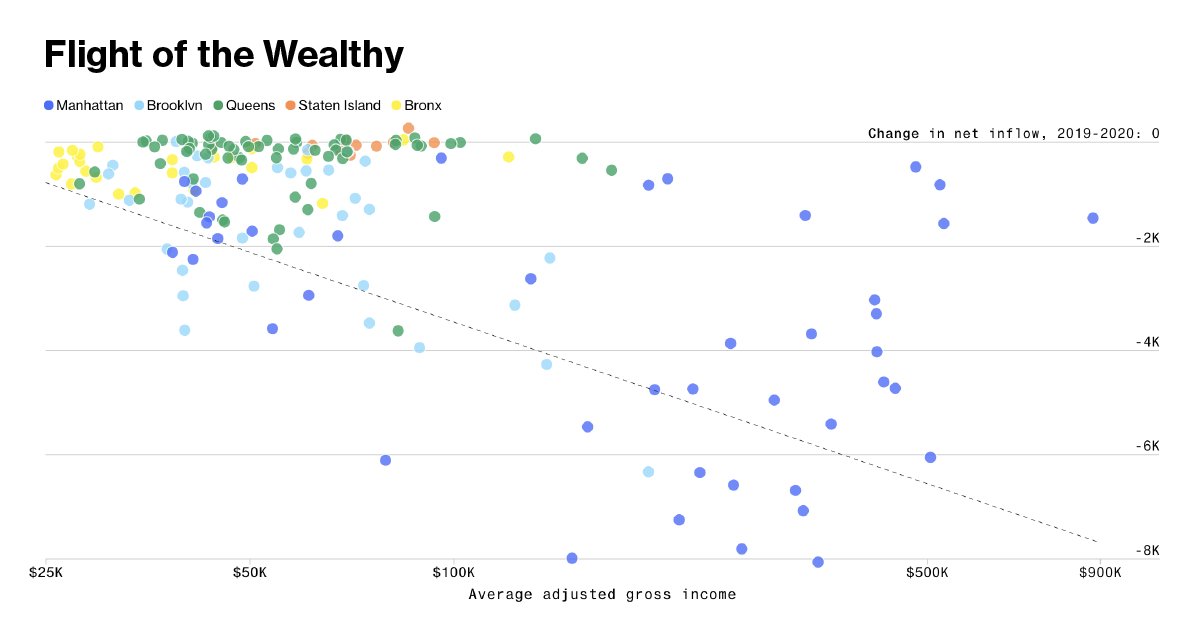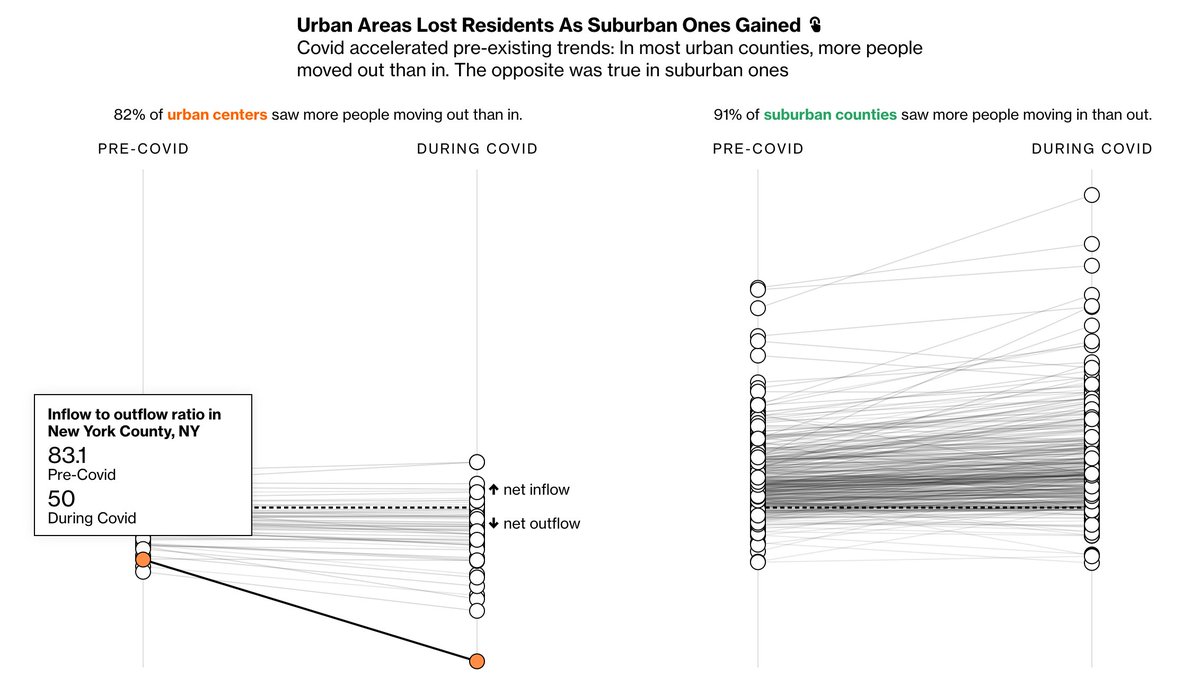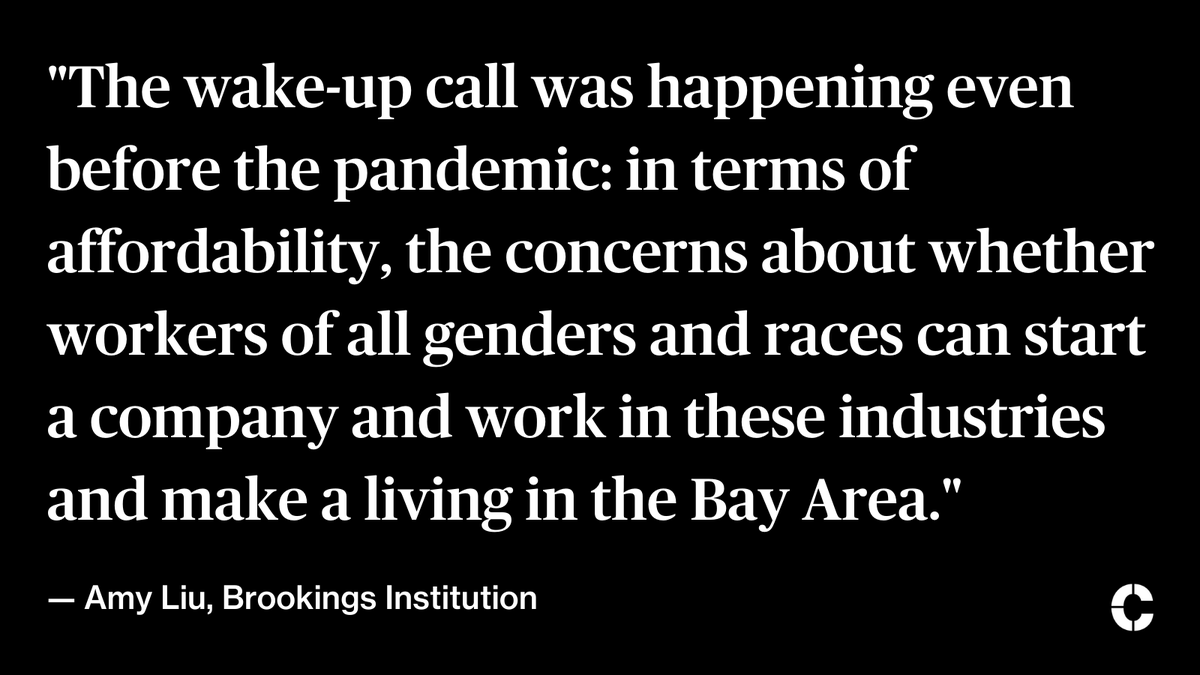1/ When people moved out of expensive cities, where did they go?
A year of migration data reveals trends and interesting surprises: https://bloom.bg/3xCC4YB ">https://bloom.bg/3xCC4YB&q...
A year of migration data reveals trends and interesting surprises: https://bloom.bg/3xCC4YB ">https://bloom.bg/3xCC4YB&q...
2/ After much speculation about emptied downtowns and the prospect of remote work, a year of @USPS data gives the clearest picture yet of how people moved.
3/ There is no urban exodus — perhaps it& #39;s more of an urban shuffle.
Despite talk of mass moves to Florida and Texas, data shows most people who did move stayed close to where they came from.
Despite talk of mass moves to Florida and Texas, data shows most people who did move stayed close to where they came from.
4/ Across the U.S., the number of people making moves that they defined as permanent was up a modest 3% between March 2020 and February 2021.
But zoom in to a few of America& #39;s densest and most expensive metro regions and the picture is more dramatic.
But zoom in to a few of America& #39;s densest and most expensive metro regions and the picture is more dramatic.
5/ "The phrase or the concept of urban exodus, that really only applies to New York and San Francisco," says Stephan D. Whitaker, a policy economist at the Federal Reserve Bank of Cleveland, who has been analyzing migration patterns during the pandemic.
6/ Those Americans who did move accelerated a trend that predates the pandemic: People moved outward.
Outward to the suburbs of their core metro area, but also farther out, to satellite cities or other major urban centers that might still give people proximity to their region.
Outward to the suburbs of their core metro area, but also farther out, to satellite cities or other major urban centers that might still give people proximity to their region.
7/ The regions around San Francisco and San Jose, two of the country& #39;s most expensive housing markets, saw the greatest increase in rates of permanent moves.
And compared to other metros, a far greater percentage of people left the Bay Area — moving to other California cities.
And compared to other metros, a far greater percentage of people left the Bay Area — moving to other California cities.
8/ One potential explanation for the Bay Area& #39;s movement is its high proportion of residents in what& #39;s called the "untethered class."
These are renters with remote-friendly jobs and no kids whose life circumstances make it easier to move around.
These are renters with remote-friendly jobs and no kids whose life circumstances make it easier to move around.
9/ In the New York City region, many people who moved during the pandemic migrated to as close as the next block or the next borough over.
More Manhattanites moved to Brooklyn than moved to the entire state of Florida.
More Manhattanites moved to Brooklyn than moved to the entire state of Florida.
10/ The data analysis revealed that people in New York City& #39;s higher-income zip codes were more likely to move.
11/ But urban dwellers also moved outward.
One of the clearest trends in New York and across the U.S. is one that predates the pandemic: Core urban areas lost movers while suburban ones gained.
One of the clearest trends in New York and across the U.S. is one that predates the pandemic: Core urban areas lost movers while suburban ones gained.
12/ One of the dominant reasons for movement out of expensive urban areas is housing costs.
But while some people with remote-friendly jobs may have the opportunity to find cheaper housing elsewhere, most Americans don& #39;t have that option.
But while some people with remote-friendly jobs may have the opportunity to find cheaper housing elsewhere, most Americans don& #39;t have that option.
13/ These trends matter to cities as they reckon with the pandemic& #39;s economic fallout.
Migration patterns can affect housing prices, tax revenue, jobs and cultural vibrancy.
Explore this interactive map to see where people moved to and from your region: https://bloom.bg/3xCC4YB ">https://bloom.bg/3xCC4YB&q...
Migration patterns can affect housing prices, tax revenue, jobs and cultural vibrancy.
Explore this interactive map to see where people moved to and from your region: https://bloom.bg/3xCC4YB ">https://bloom.bg/3xCC4YB&q...

 Read on Twitter
Read on Twitter